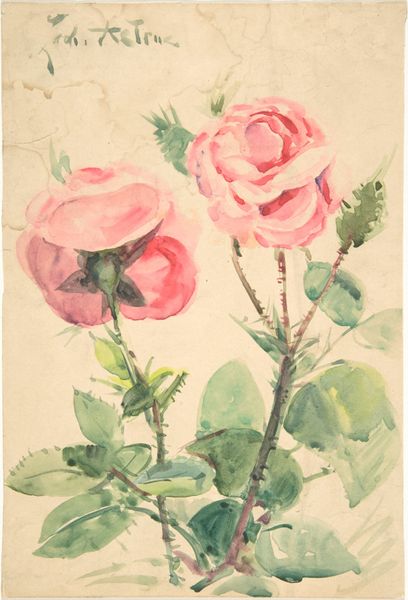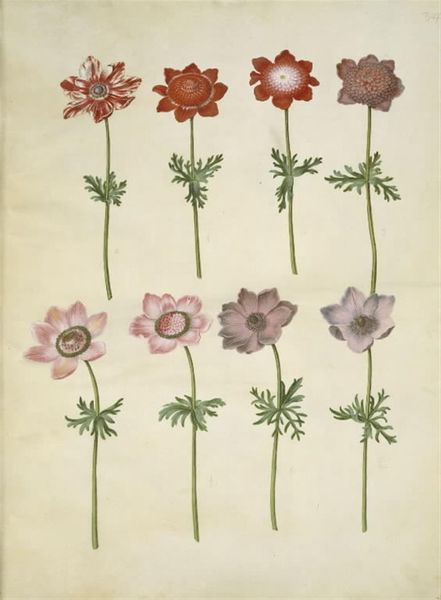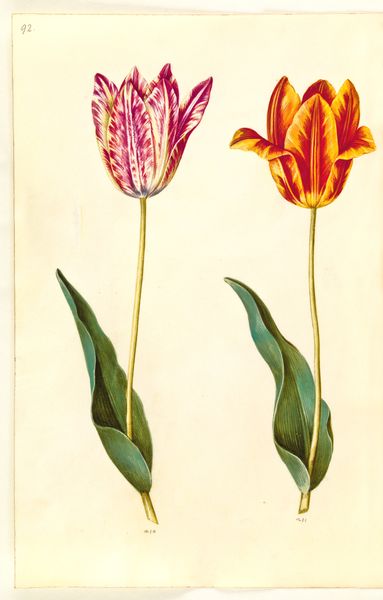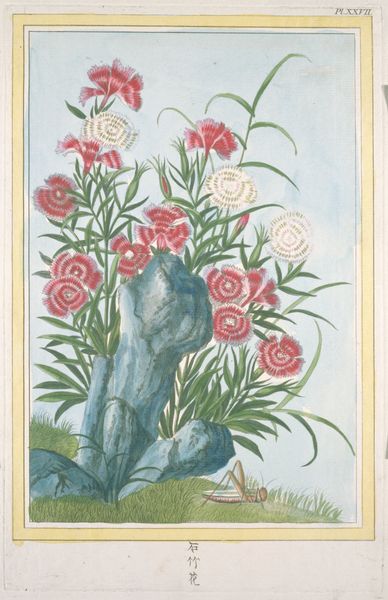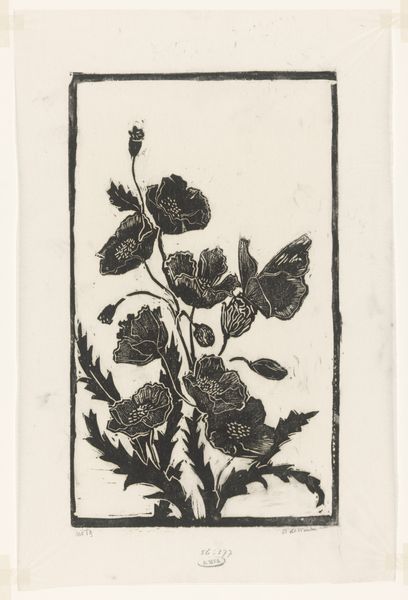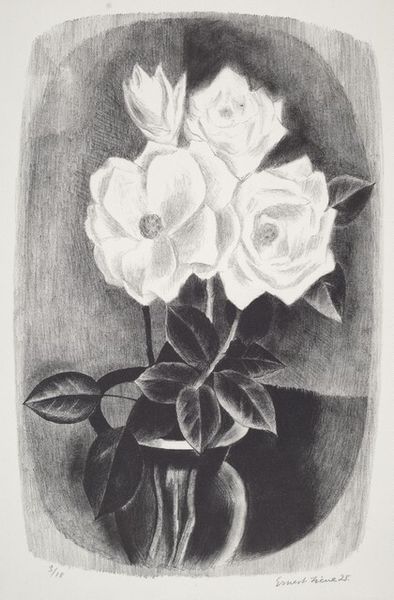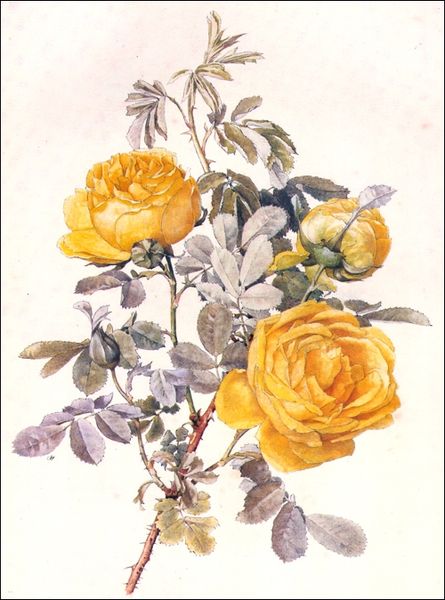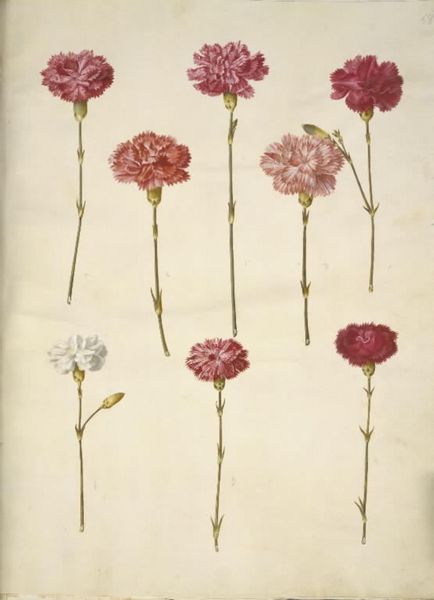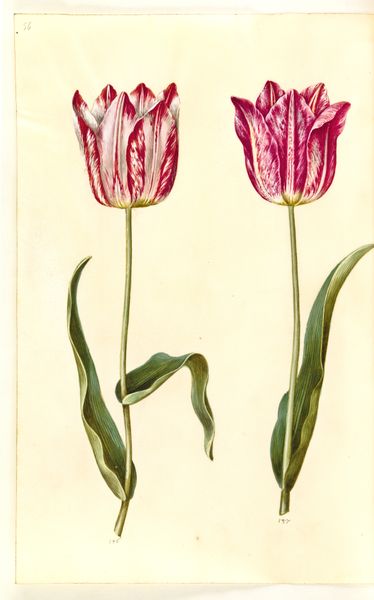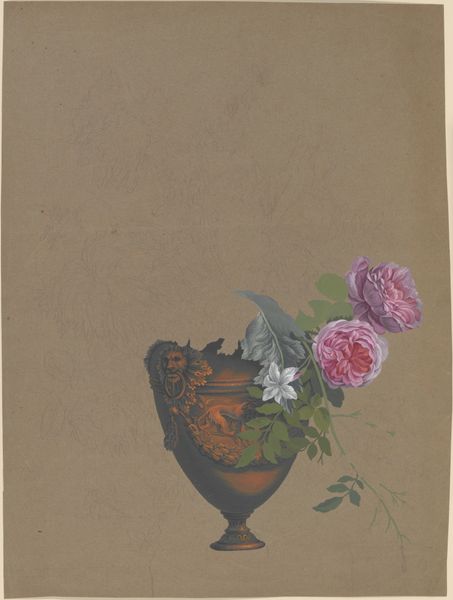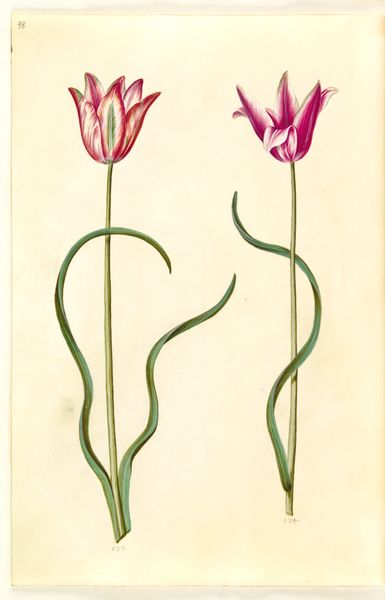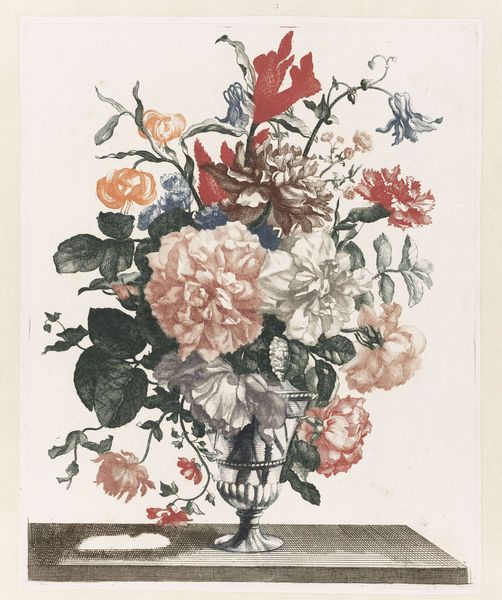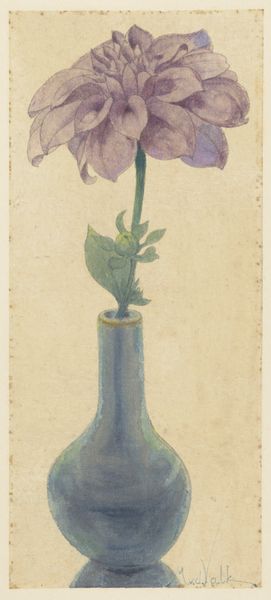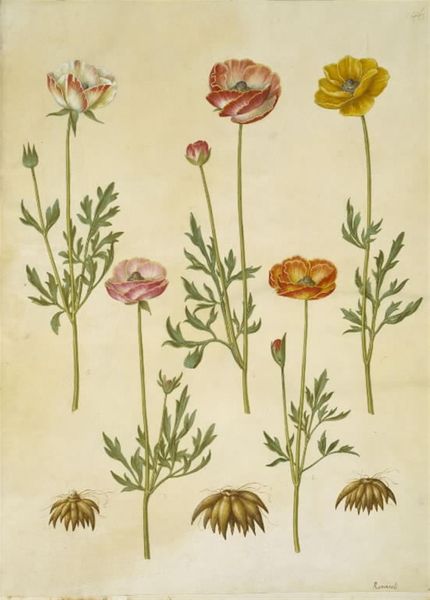
painting, watercolor, ink
#
portrait
#
still-life
#
water colours
#
painting
#
watercolor
#
ink
#
coloured pencil
#
orientalism
#
modernism
Copyright: Tsuguharu Foujita,Fair Use
Curator: Today, we’re examining "Trois roses dans un vase," a 1957 watercolor and ink still life by Tsuguharu Foujita. Editor: It’s delicate. The light colors create such a soft, almost ephemeral quality, and yet the thorny stems suggest a sharper reality underneath. Curator: Foujita often explored the tension between Western modernist styles and his own Japanese heritage. The clear vase, almost disappearing against the pale background, has a decidedly Western aesthetic. But these roses themselves...they seem laden with deeper cultural significance. Editor: There's something particularly striking about their arrangement. The composition directs my eye immediately from the darkest rose on the left, to the faintest color on the right. This is masterfully structured with use of color alone. I’m interested by the grey hues found in the stems, the leaves. A very selective way of dealing with botanical form and color, Curator: Roses, in Western art, often symbolize love, beauty, or sometimes transience. Given Foujita's background, might he also be invoking the symbolism of flowers in Japanese art, where each bloom carries unique cultural and philosophical meanings? Editor: Definitely a compelling consideration. And notice how precisely the petals are defined. There is a great emphasis on linear quality here. That thin black ink brings all the softness of watercolor into higher resolution. A sort of dialogue occurs there. Curator: The thorns feel important here, disrupting any easy reading of beauty and fragility. Are they there to remind us of pain, perhaps, or resilience? Do they invoke the idea of a life cycle of renewal, mirroring our own experience in the world? Editor: An interesting paradox that perhaps all great still life explores! What is more permanent: the wilting beauty, or its memory? Foujita provides an image rich enough to support that paradox. Curator: It invites contemplation of time, loss, and, perhaps, a gentle acceptance. Editor: A thoughtful blend of observation and emotion rendered with beautiful sensitivity.
Comments
No comments
Be the first to comment and join the conversation on the ultimate creative platform.
